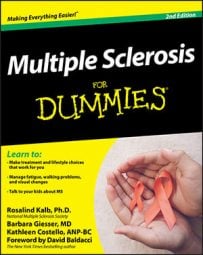Whether you have multiple sclerosis or not, the goal of exercise is to feel and function better. But for those who do have MS, the familiar “no pain, no gain” philosophy doesn’t apply — there’s no need to push yourself to the limit. Here are some tips to help you be comfortable and safe while getting the greatest possible benefit out of your physical activities:
-
Try to plan your exercise during peak energy times. There’s no point in starting when you’re already exhausted. If you begin to exercise and quickly get very tired, take a short break. Sometimes it only takes a few minutes to feel ready to go again.
-
Take a few minutes to warm up before (and cool down after) any vigorous activity. For instance, it’s a good idea to drink a glass of cold water or juice before you start to help keep your body temperature down. And loosen up your joints with gentle stretches or rotations to avoid strain.
After you finish exercising, gently stretch out the muscles you’ve been using to avoid cramping and stiffness, and take another drink to cool yourself off.
-
Don’t push yourself beyond your limits. It’s much healthier and more effective to get moderate exercise on a regular basis than to push yourself to exhaustion once and then be too worn out to do anything for the rest of the week.
And if you’re having an MS relapse or fighting off a cold or the flu, give yourself a break from your exercise routine and come back to it when you’re feeling like yourself again.
-
Exercise in a cool environment. Even a slight elevation in your core body temperature — as little as half a degree — can cause your symptoms to act up. These little flare-ups, which are called pseudoexacerbations, are nothing to worry about; they’ll disappear after your body has cooled down again.
If your MS is particularly sensitive to the heat, you can protect yourself by sipping cold water during your workout, wearing a commercially available cooling garment, such as a vest, bandanna, or headband, and staying close to a fan or air conditioner.
-
If you’re balance-challenged, be sure to stand near a wall or chair when you exercise, or ask someone to spot you. If you don’t feel sure-footed enough to balance standing up, your physical therapist can recommend exercises for you to do while seated on a chair or mat.
-
Watch out for slippery floors in exercise facilities and around pools. So that you don’t slip and fall, it’s a good idea to wear non-skid shoes any time you’re going to be maneuvering on a wet floor.
-
Before engaging the services of a personal trainer, make sure that he or she has some experience with people with MS. Trainers who are unfamiliar with MS generally don’t understand the limitations imposed by MS fatigue or by muscles that have been weakened by lack of nerve conduction.
Your physician or physical therapist can recommend an exercise regimen for you to do with your trainer. Be sure you work with your trainer to set realistic goals, given your level of ability.
For more information about exercise and MS, check out the National MS Society’s booklet, Exercise as Part of Everyday Life, online or by calling (800) FIGHT-MS.

